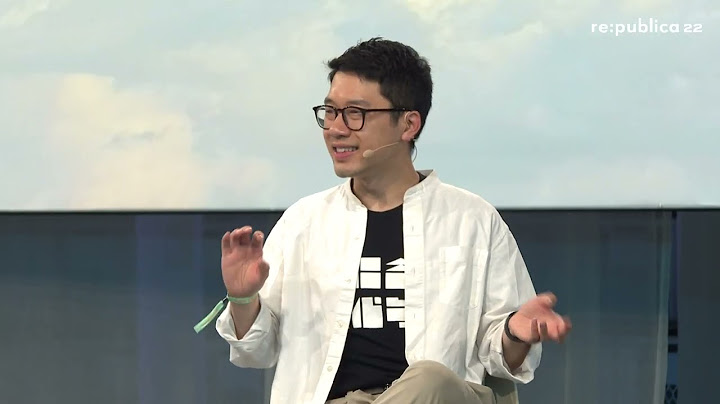What powers do you give, what responsibilities and services should you expect when you elect a president and a vice president?
If the president’s office is vacated due to death, permanent disability, removal from office, or resignation, the following persons will assume the office until a new president is elected:
Sources: 1987 Constitution of the Republic of the Philippines; Administrative code of 1987 (EO 292 1987) Vice PresidentTerm of Office
Qualifications
Powers and Responsibilities
Succession
Sources: 1987 Constitution of the Republic of the Philippines; Administrative code of 1987 (EO 292 1987) – Research by Dylan Salcedo/Rappler.com Read the other articles in this series: News
WATCH Published May 09, 2022 08:55 AM
Being the president of the Philippines isn't all fun and games, especially after the pandemic. The president controls the executive department of the government. The head of state also has the power of appointment, naming the heads of executive departments, undersecretaries, assistant secretaries, ambassadors, military officials and members of the constitutional commissions. Even with checks and balances, the president is said to have some level of influence in the two other branches of government: legislative and judicial, being able to appoint the judicial bar council of the supreme court, court of appeals, and members of the high court and lower courts. The Philippine president has the power to veto bills passed by congress, as well as to strike down items in appropriation, revenue, or tariff bills. As the commander-in-chief, the president has the power to suspend the Writ of Habeas Corpus and declare Martial Law, if s/he deems fit. Being the Philippine president is a tough job that comes with an annual salary of P5M, a helicopter, an aircraft, a yacht, a car, and round the clock security care of the Presidential Security Group (PSG). — LA, GMA News
The Philippines is a republic with a presidential form of government wherein power is equally divided among its three branches: executive, legislative, and judicial. The government seeks to act in the best interests of its citizens through this system of check and balance.

One basic corollary in a presidential system of government is the principle of separation of powers wherein legislation belongs to Congress, execution to the Executive, and settlement of legal controversies to the Judiciary.

The Legislative branch is authorized to make laws, alter, and repeal them through the power vested in the Philippine Congress. This institution is divided into the Senate and the House of Representatives. The Legislative Branch enacts legislation, confirms or rejects Presidential appointments, and has the authority to declare war. This branch includes Congress (the Senate and House of Representatives) and several agencies that provide support services to Congress. The Senate is composed of 24 Senators who are elected at large by the qualified voters of the Philippines. The House of Representatives is composed of about 250 members elected from legislative districts in the provinces, cities, and municipalities, and representatives elected through a party-list system of registered national, regional, and sectoral parties or organizations. The party-list representatives shall constitute twenty per cent of the total number of representatives including those under the party list. For three consecutive terms after the ratification of this Constitution, one-half of the seats allocated to party-list representatives shall be filled, as provided by law, by selection or election from the labor, peasant, urban poor, indigenous cultural communities, women, youth, and such other sectors as may be provided by law, except the religious sector.

The Executive branch is composed of the President and the Vice President who are elected by direct popular vote and serve a term of six years. The Constitution grants the President authority to appoint his Cabinet. These departments form a large portion of the country’s bureaucracy. The executive branch carries out and enforces laws. It includes the President, Vice President, the Cabinet, executive departments, independent agencies, boards, commissions, and committees. The President leads the country. He or she is the head of state, leader of the national government, and Commander-in-Chief of all armed forces of the Philippines. The President serves a six-year term and cannot be re-elected. The Vice President supports the President. If the President is unable to serve, the Vice President becomes President. He or she also serves a six-year term. Cabinet members serve as advisors to the President. They include the Vice President and the heads of executive departments. Cabinet members are nominated by the President and must be confirmed by the Commission of Appointments.

The Judicial branch holds the power to settle controversies involving rights that are legally demandable and enforceable. This branch determines whether or not there has been a grave abuse of discretion amounting to lack or excess of jurisdiction on the part and instrumentality of the government. It is made up of a Supreme Court and lower courts. The judicial branch interprets the meaning of laws, applies laws to individual cases, and decides if laws violate the Constitution. The judicial power shall be vested in one Supreme Court and in such lower courts as may be established by law.
Each branch of government can change acts of the other branches as follows:
The Constitution expressly grants the Supreme Court the power of Judicial Review as the power to declare a treaty, international or executive agreement, law, presidential decree, proclamation, order, instruction, ordinance or regulation unconstitutional. |

Pos Terkait
Periklanan
BERITA TERKINI
Toplist Popular
#2
#3
#4
Top 8 wenn kleinigkeiten am partner stören 2022
1 years ago#5
Top 7 hilfsmittel für behinderte im alltag 2022
1 years ago#6
#7
#8
Top 6 cafe da manha pobre 2022
1 years ago#9
#10
Periklanan
Terpopuler
Periklanan
Tentang Kami
Dukungan

Copyright © 2024 kemunculan Inc.


















